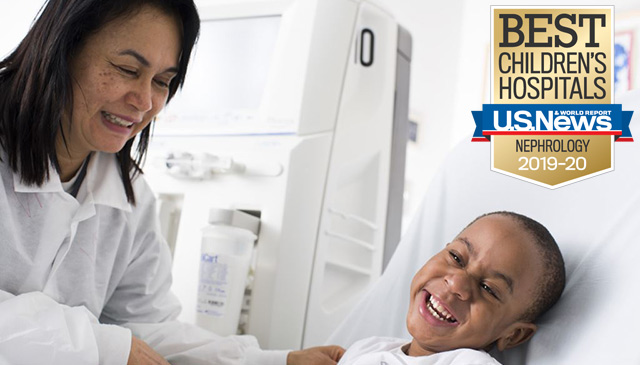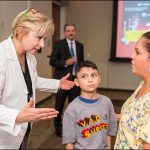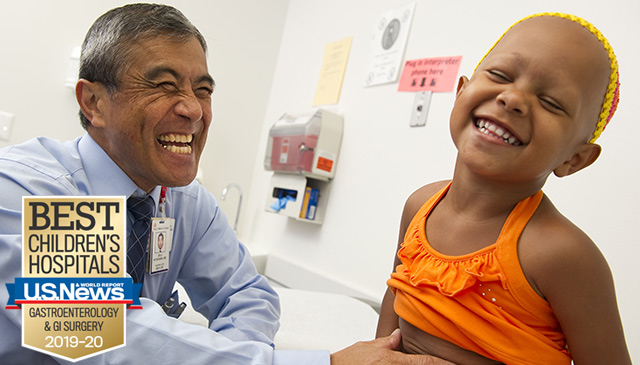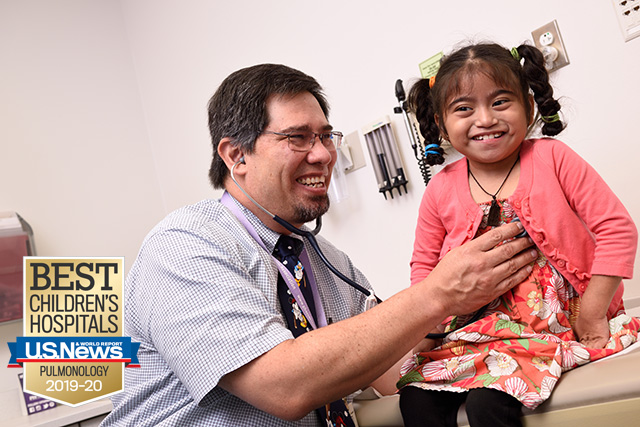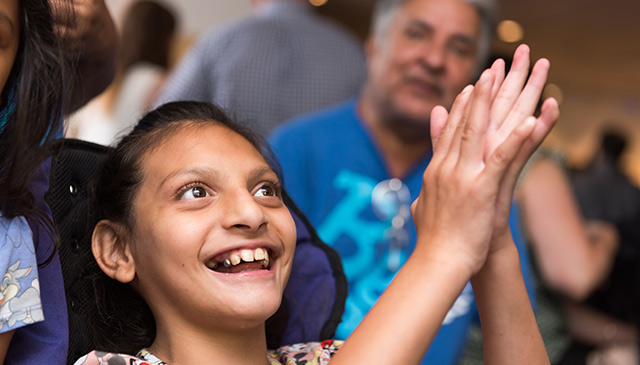
Every year, more than 25,000 patients come to Texas Children’s for the expert care we provide in neurology, neurosurgery, neurophysiology and genetics. They come from across the nation and around the world with neurologic conditions ranging from common to rare to unknown because few places offer the full continuum of care that Texas Children’s provides.
It was fitting, then, that Texas Children’s was recently recognized for its commitment to excellence and comprehensive, high-quality care, once again being named No. 3 in the nation for pediatric neurology and neurosurgery by U.S. News & World Report.
“We are incredibly proud to be ranked once again among the best locations in the nation for pediatric neurology and neurosurgery,” said Texas Children’s Chief of Neurology and Development Neuroscience Dr. Gary Clark. “Our desire is always to provide the very best care for our patients. That is what drives everything we do and what has gotten us where we are today. We’re committed to providing outstanding neurological and neurosurgical care, to conducting groundbreaking research, and to becoming the best program in the nation.”
The U.S. News rankings use an approach that analyzes quality of health care and patient outcomes data from thousands of medical institutions across the country. This includes measuring specialized clinics and programs, external accreditations, and compliance with best practices. A ranking among the top hospitals in a specialty area indicates a commitment to not only providing high-quality care, but also to identifying gaps where improvements are needed.
One recent example was when survey data revealed gaps specific to neurosurgical shunts. Teams were able to review and analyze the data and swiftly close the gaps.
“We are always striving for excellence, so we take the U.S. News rankings very seriously,” said Chief of Neurosurgery Dr. Howard Weiner. “The rankings are just one measure of the trajectory of the Neuroscience Center as a whole. When I first arrived three years ago, the goals were to be the destination for high-quality, innovative and attentive care; to train the leaders in the field; and to lead in the investigation of neurologic conditions. We’re meeting those goals, but what’s key to our success is the ability for everyone – in Neurosurgery and our amazing colleagues in Neurology – to work together for our patients. That’s the driving principle behind Neuroscience at Texas Children’s.”
Big wins for patients and families
This year, Neurology and Neurosurgery built on successful existing programs and also implemented new initiatives to improve monitoring capabilities, reduce occurrences of infection and improve the overall quality of care.
- Saw significant decreases in unplanned returns to OR for craniotomy and in readmissions for Chiari decompression
The surgical advanced practice provider team implemented a post-discharge call system to assess patients for signs of infection, increases in pain or other possible complications. This system allowed the surgical team to determine if a clinic visit was appropriate, and it helped decrease the number of 30-day unplanned returns to the OR for craniotomy patients and the number of Chiari decompressions patients readmitted within 30 days of surgery.
- Increased monitoring for epilepsy patients who received surgical resection or laser ablation
To ensure patients always receive the highest possible level of care, Texas Children’s has always been committed to recruiting and retaining the best and brightest. The addition of six new epileptologists helped greatly improve monitoring capabilities. This past year, at least 50 percent of epilepsy patients who received surgical resection or laser ablation surgery received intraoperative electrocorticography and/or extra-operative monitoring.
- Significantly decreased percentage of surgical site infections (SSIs) for ventricular shunt surgeries
Dr. William Whitehead has been leading efforts to identify opportunities to reduce SSIs for shunt-related procedures. One key strategy was improved compliance with a bundle of evidence-based surgical protocols, which include the administration of pre-operative antibiotics, appropriate hair removal and proper scrubbing of the surgical site. Adherence to these protocols contributed to a significant decrease in the percentage of SSIs for ventricular shunt surgeries.
- Decreased the complication rate for epilepsy surgical procedures
An expansion in Texas Children’s Epilepsy program has led to an increase in neuro-diagnostic monitoring volumes that eclipses other institutions. With the addition of new team members (i.e., six new epileptologists) and the opening of a dedicated neuro-intensive care unit this past year – one of the first of its kind in the country – Texas Children’s provides the safest and most effective environment for the care of children with seizure activity.
Learn more about Texas Children’s Neuroscience Center.


